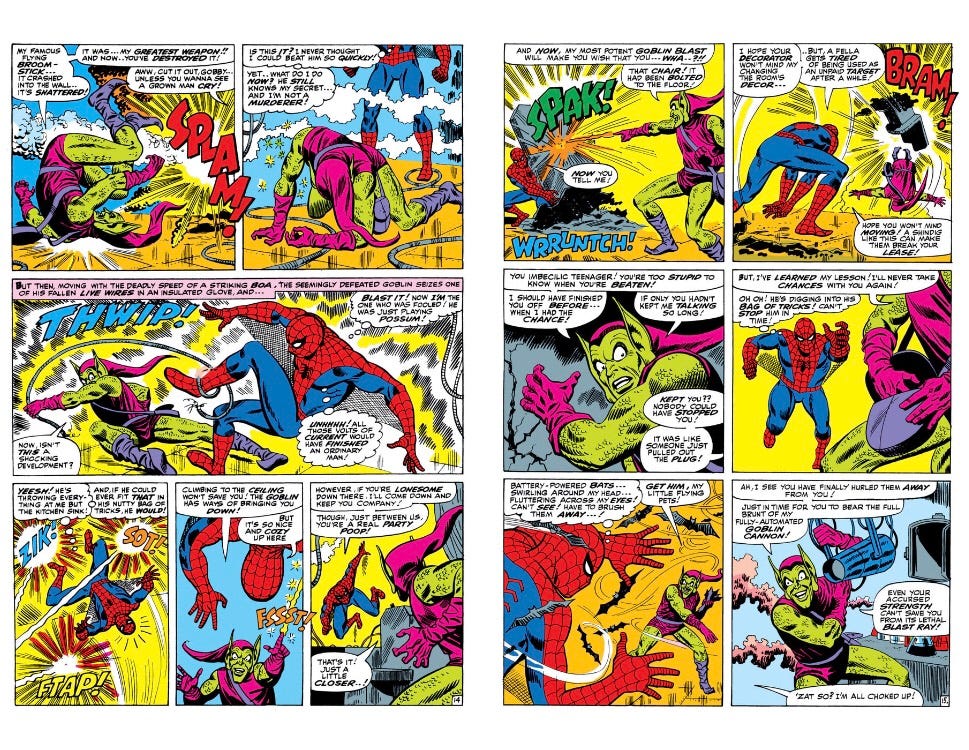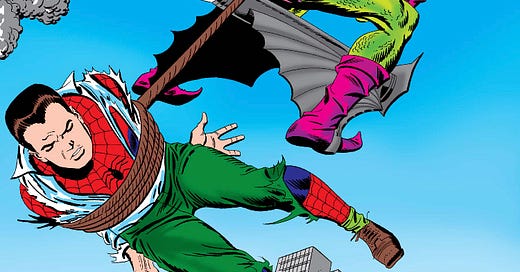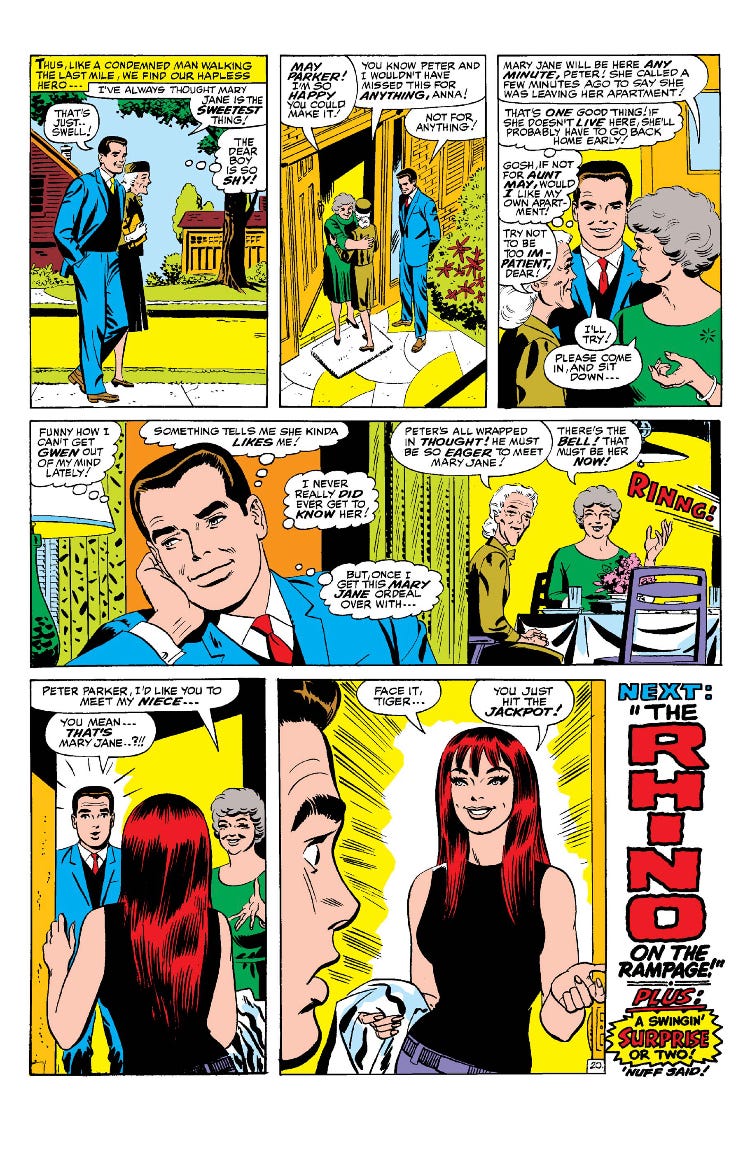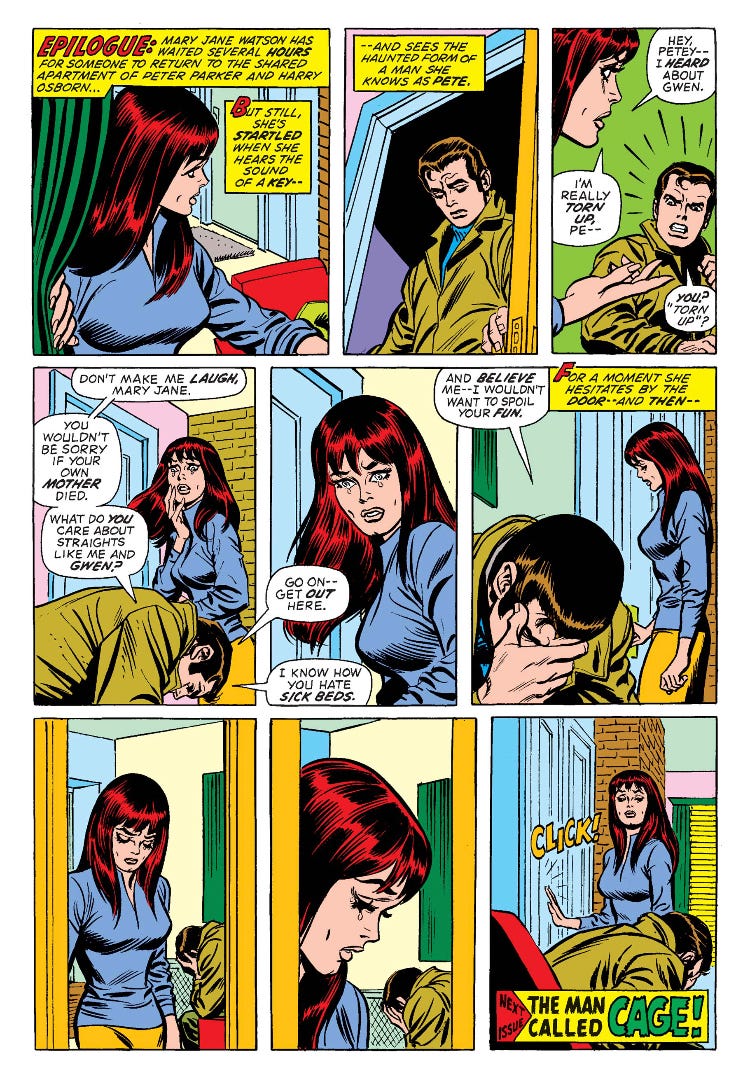Truly Amazing: Remembering John Romita, Sr.
Celebrating the man who helped make Spider-Man an icon
It can be easy to take for granted that Spider-Man is one of the most famous and popular comic book characters in the history of the medium. Aside from the comic books themselves, Spider-Man has headlined seven live action feature films, two animated feature films, four live action made-for-television films, ten animated television series, two live action television series, and a Broadway musical. There is also a nearly limitless amount of licensed merchandise including toys, video games, collectibles, posters, clothing (I’m wearing a Spider-Man shirt at this very moment), and much more. The Spider-Man brand is so strong that Sony has been trying to create an entire cinematic universe of films starring Spider-Man’s supporting characters. Not bad.
Spider-Man wasn’t always sitting atop the superhero landscape. He was created over twenty years after characters like Superman and Batman (the two other most popular and recognizable superheroes) in the pages of Amazing Fantasy #15 by Stan Lee and Steve Ditko. You know the story by now. Nerdy high school student Peter Parker is bitten by a radioactive spider that grants him the proportional strength, speed, and agility of a spider along with the ability to stick to walls and a “spider sense” that allows him to perceive immediate threats moments before they occur. He ultimately becomes a superhero when his Uncle Ben is killed by a robber that he had failed to stop moments earlier because he didn’t think it was his responsibility.
The success of that initial story immediately led to his own series called Amazing Spider-Man (also from Stan Lee and Steve Ditko) that saw young Peter Parker juggle his life as a superhero with his everyday high school problems with girls, bullies, homework, etc. It was instantly popular among readers who saw themselves in Peter. Prior to Spider-Man, most superheroes were grown adults. Teenage characters tended to be sidekicks, so it was incredibly rare for teenage readers to see a headlining superhero with relatable problems.
Despite this popularity, Amazing Spider-Man still trailed significantly behind the top books published by DC (and behind Fantastic Four at Marvel) for the entirety of Steve Ditko’s tenure on the book as artist and co-plotter. Ditko officially left the title following Amazing Spider-Man #38 published on June 30, 1966. Replacing him as artist and co-plotter was John Romita, Sr.
Romita immediately changed the look and feel of Amazing Spider-Man with his initial two issue story co-plotted with Stan Lee in issues #39 and #40 in 1966. Romita’s art style was a radical departure from what Ditko had been doing on the title. That difference in style was most evident in how the two men drew Peter Parker both in and out of his Spider-Man costume. Ditko tended to draw him as thin with spindly limbs in unnatural (bordering on inhuman) poses. Fight sequences drawn by Ditko often focused on Spider-Man’s agility and ability to dodge the attacks of his enemies. Romita took a much different approach. Coming from a background in romance comics, Romita drew Peter as a handsome leading man and the women in his life as models. When in the suit, Spider-Man looked much more traditionally heroic with broader shoulders and a more muscular build. Fight sequences went from a series of feints and parries to full on brawls with Spider-Man trading haymakers with his villains.

This change in style was put to great use in Amazing Spider-Man #39 and #40. This two part story sees the Green Goblin successfully capture and unmask Spider-Man (becoming the first supervillain to ever discover Spider-Man’s true identity) followed by Green Goblin revealing his true identity as Norman Osborn for the first time to both Peter and the readers. Quite a momentous occasion! The villainous monologue delivered by Norman to a drugged and incapacitated Spider-Man clearly served as inspiration for the rooftop scene between Green Goblin and Spider-Man in Sam Raimi’s Spider-Man film.
Once the speech concludes, Spider-Man and Green Goblin engage in what is easily the most brutal fight ever depicted in Amazing Spider-Man up to that point. It’s an absolute brawl between the two adversaries that sets the template for all fights between the two characters to come, and it elevates Osborn to his status as Spider-Man’s archenemy that he still holds to this day.

Following those first two issues, Romita starts cranking out one iconic image after another while also introducing villains and supporting characters to Spider-Man’s canon that have stood the test of time. Rhino is introduced in Amazing Spider-Man #41, Shocker is introduced in issue #46, and Kingpin makes his debut in issue #50. Kingpin in particular has gone on to become one of the most successful villains in Marvel Comics.
More importantly than any villain, Romita became the first artist to draw the face of Mary Jane Watson at the end of Amazing Spider-Man #42. Mary Jane had been something of a running gag in Amazing Spider-Man up to this point. She was frequently referenced as someone Aunt May wanted to set Peter up with on a date (she was the niece of one of Aunt May’s friends), but she never appeared on page save for one cameo appearance in Amazing Spider-Man #25 with her face obscured by a plant. When she finally shows up at Peter’s doorstep in Amazing Spider-Man #42 with her now iconic “jackpot” line, she instantly vaulted into the status of a fan favorite supporting character. She would go on to marry Peter Parker, and the two would live happily ever after. Don’t Google that.
Amazing Spider-Man #50 is another iconic issue from Romita’s early time on the series. The classic “Spider-Man No More!” story sees Peter abandon his identity as Spider-Man and try to resume a normal life as Peter Parker full time. The cover of the issue is one of Romita’s best, and it’s one that has been homaged and parodied frequently in the decades since.
In the issue, Peter removes his costume and tosses it in an alleyway trash can. It’s found by a random child and delivered to J. Jonah Jameson who is beyond delighted by this turn of events. Peter ultimately realizes that it’s his responsibility to help people with the power he has, and he resumes his role as the friendly neighborhood Spider-Man by the end of the issue. The story was adapted by Sam Raimi in Spider-Man 2, and some of Romita’s images were pulled straight off the page and used in the film.

Romita’s time on Amazing Spider-Man was a massive success. The series overtook Fantastic Four as Marvel’s bestselling comic within a year of Romita becoming the full time artist and co-plotter. He would continue working on the series as a penciler up to the early-1970s, and he would continue to serve as inker well beyond that.
Romita famously proposed that Gwen Stacy (Peter Parker’s girlfriend at the time) be killed off in Amazing Spider-Man #121 in 1973. Gerry Conway wrote the issue with Gil Kane on pencils, and Romita provided inkling duties. Gwen is killed when Green Goblin throws her off a bridge, and her neck is snapped when Spider-Man catches her with a web line due to the force of the fall. Green Goblin is seemingly killed in the following issue during a fight with an enraged Spider-Man. The epilogue to the issue sees a devastated Peter have an outburst aimed at Mary Jane before she decides to stay and comfort him. Romita’s inks on that page show off just how talented he was at capturing emotion.
Amazing Spider-Man had become the top selling comic book series in the industry at this point. It was now beating out not only the other titles at Marvel, but the likes of DC’s most popular titles featuring Superman and Batman as well. This comic book success would lead to the pop culture phenomenon the character is today. John Romita, Sr. deserves a lot of the credit for that.
John Romita, Sr. passed away on June 12, 2023 at the age of 93. He leaves behind an incredible legacy that is simply unimpeachable. He will be dearly missed.
One last bit of cool Romita information: his son, John Romita, Jr., is the current artist on Amazing Spider-Man and has been drawing Spider-Man comics dating all the way back to 1980.








